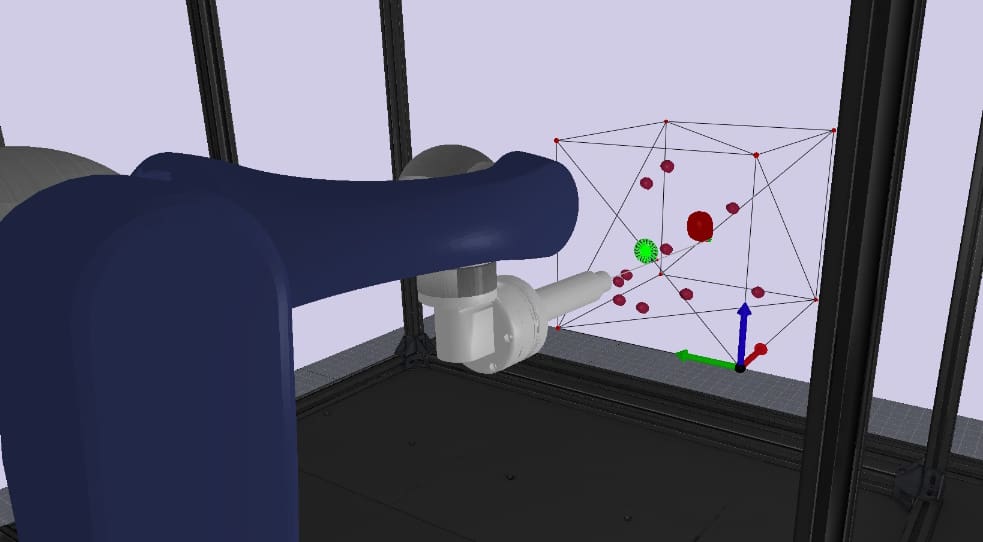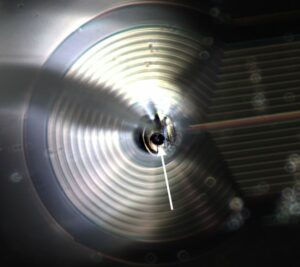
A mathematical model developed by researchers at the University of Bristol can improve the accuracy of medical needle-use in surgical simulations. The new model, which produces an effect said to be “as similar as possible” to real life needle delivery, has the potential to improve training for junior surgeons.
Minimally invasive surgical procedures delivered via needles placed through the skin are employed for a wide range of medical applications – including tissue biopsy, epidural anaesthesia, brachytherapy, neurosurgery and deep brain stimulation. The success of these procedures, however, is highly dependent on accurate needle placement. Imprecise insertion has the potential to cause serious complications, such as false negatives in a biopsy, for example, or the accidental destruction of healthy tissue in ablation procedures.
To help master these challenging operations, junior surgeons can be trained using surgical simulators that provide visual and haptic feedback. “Surgical simulation constitutes an integral part of modern medical practices,” explains first author and mechanical engineer Athanasios Martsopoulos of the Bristol Robotics Laboratory. “It offers a safe environment for surgeons to train in, but also a framework for planning, researching and better understanding surgical interventions.”
Key to such simulations, however, is the accurate modelling of soft tissues and the flexible medical needles, as well as the interaction forces between them. In their study, Martsopoulos and his colleagues developed new models of flexible medical needles using techniques from continuum mechanics – the study of the deformation of, and the transformation of forces through, materials that are modelled not as a series of discrete particles but as a continuous mass.
The researchers report that the approach enabled them to develop model needles for prostate biopsy and brachytherapy that are both highly accurate and more computationally efficient than their previous counterparts. The latter quality was achieved, the team explains, by cutting down on the introduction of unnecessary steps in the modelling.
“The computational efficiency of the methods, combined with their accuracy, allows their integration into surgical simulation environments aimed at the training of junior surgeons,” says Martsopoulos. “The proposed algorithms are readily available for integration with such simulation solutions and they aim to enhance their visual and haptic fidelity.”
With their initial study complete, the researchers are now looking to combine their new models of medical needles with computationally efficient and accurate models of human tissue. This, they explained, will allow them to model the dynamics of virtual surgical instruments in a “fully-featured” surgical simulation.

Biopsy needle makes brain surgery safer
“Future extensions of our work will also allow the implementation of the proposed model with the help of the graphics processing unit, aiming at further improvement of the model’s computational efficiency,” they add.
Alongside helping to train the surgeons of the future, the team notes, the model also has potential to improve the pre-operative planning of surgical interventions and help in the development of surgical robots.
The study is described in Mathematical and Computer Modelling of Dynamical Systems.
- SEO Powered Content & PR Distribution. Get Amplified Today.
- Platoblockchain. Web3 Metaverse Intelligence. Knowledge Amplified. Access Here.
- Source: https://physicsworld.com/a/medical-needle-model-improves-virtual-training-platforms-for-junior-surgeons/
- :is
- 2022
- a
- AC
- accuracy
- accurate
- achieved
- Aiming
- algorithms
- allows
- and
- applications
- approach
- ARE
- AS
- At
- author
- available
- BE
- Better
- between
- Brain
- bristol
- by
- CAN
- Cause
- challenging
- click
- colleagues
- combine
- combined
- complete
- computer
- continuous
- Continuum
- cutting
- deep
- delivered
- delivery
- dependent
- described
- develop
- developed
- Development
- down
- dynamics
- effect
- efficiency
- efficient
- enabled
- engineer
- Environment
- environments
- example
- explained
- Explains
- extensions
- feedback
- fidelity
- First
- flexible
- For
- Forces
- Framework
- from
- further
- future
- graphics
- haptic
- healthy
- help
- helping
- highly
- However
- HTTPS
- human
- image
- implementation
- improve
- improvement
- in
- Including
- information
- initial
- instruments
- integral
- integration
- interaction
- Introduction
- issue
- jpg
- Life
- looking
- MAKES
- Mass
- master
- materials
- mathematical
- max-width
- mechanical
- mechanics
- medical
- Medical Applications
- methods
- model
- modelling
- models
- Modern
- more
- neurosurgery
- New
- Notes
- of
- Offers
- on
- open
- Operations
- part
- planning
- Platforms
- plato
- Plato Data Intelligence
- PlatoData
- potential
- practices
- previous
- procedures
- processing
- proposed
- provide
- quality
- range
- real
- real life
- report
- researchers
- robotics
- robots
- safe
- Said
- says
- Series
- serious
- similar
- simulation
- Skin
- smart
- Soft
- Solutions
- Steps
- Study
- success
- such
- Surgery
- surgical
- team
- techniques
- that
- The
- The Future
- their
- Them
- These
- Through
- thumbnail
- to
- Train
- trained
- Training
- Transformation
- true
- understanding
- unit
- via
- Virtual
- WELL
- which
- wide
- Wide range
- will
- with
- Work
- zephyrnet













